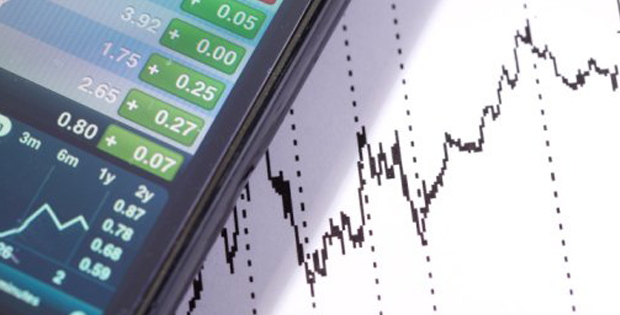by Franklin Templeton Investments blog, Franklin Templeton Investments
The Digest
Last week saw global equity markets pause for breath, with most major indices declining when faced with a sobering economic outlook from the US Federal Reserve (Fed) and fears of a second wave of COVID-19 infections. In addition, we have seen meteoric gains in recent weeks, so many suggest a pullback was overdue. On the week, the MSCI World Index traded -4.5%; Stoxx Europe Index 600 -5.7%; S&P 500 Index -4.8% and MSCI Asia Index -1.1%.1
Equity Markets Pause for Breath
Market performance was fairly lacklustre during the first half of last week, but Thursday’s trading session (11 June) in particular saw some sharp declines for equity markets, with the S&P 500 Index -5.9% and the Stoxx Europe Index 600 -4.1%. Rather than one “smoking gun” reason, it felt as if a number of factors combined to weigh on investor sentiment.
Economic reality check: Whilst the Fed meeting on 10 June didn’t produce too many surprises, the overall message from the Fed did provide a stark reminder of the challenges facing the US economy. Despite the recent better-than-expected US employment data, Fed Chair Jerome Powell stated: “I think we have to be honest, it’s a long road. Depending on how you count it, well more than 20 million people displaced in the labour market. It’s going to take some time.”
The Fed predicted US gross domestic product (GDP) will contract by 6.5% this year before rebounding 5% next year. The central bank did stress it would support the economy, stating interest rates were likely to be held near zero through 2022 and it would maintain asset purchases “at least” at the present pace.
Last week also saw a somber report form the Organisation for Economic Cooperation and Development (OECD) that stated many major economies faced a tough recovery from the crisis. In its view, “Most people see a V-shaped recovery, but we think it’s going to stop halfway. By the end of 2021, the loss of income exceeds that of any previous recession over the last 100 years outside wartime, with dire and long-lasting consequences for people, firms and governments.” If we avoid a second wave, the global economy would still likely be 6% smaller by end of 2021 than pre-COVID predictions. If there were to be a second wave, this could be closer to 10%.
What was also interesting in the OECD report was the different regional predictions. The OECD sees South Korea only contracting 1.2% in 2020, with growth of 3.1% next year. However, it sees the UK economy shrinking 11.5% in 2020, with a 9% rebound in 2021.
COVID-19 second wave fears: The Fed meeting coincided with headlines that US COVID-19 infections had topped two million, and there were signs of cases creeping up in a number of US states. States such as Texas, Florida and California all saw increased daily cases. This news certainly helped spook investors last week when sentiment was already gloomy.
US presidential election campaign in focus: Democratic candidate Joe Biden has seen polls swing in his favour in recent weeks, and there is increasing focus on the impact of a potential Biden victory. Of note, Biden has said he would reverse some of the corporate tax cuts the Trump administration put in place. From what we’ve seen, it doesn’t appear that markets are pricing this outcome in, with the main beneficiaries of the tax cuts continuing to trade higher despite falling odds of a Trump victory. We think the election will be a key dynamic for equity markets in coming months.
Too much, too quickly: Since the lows on 23 March, the S&P 500 Index saw an epic rally of 45%. Many equity indices were being flagged as overbought. With that in mind, it is perhaps not surprising to see markets pull back. The 3200 level on the S&P 500 Index appeared to have been a resistance level where the US market has failed. We see key support likely at the 200-day moving average—the average price over the past 200 days—close to the 3000 level.
The Week in Review
Europe
Last week’s market selloff saw European equities underperform their US counterparts and close the week down 5.7%. The year-to-date (YTD) underperformers were the underperformers once again last week, as the cyclicals gave back some of their recent gains. Whilst they are still +25% from March’s lows, they remain -17% YTD.
The cautious economic outlook, fears over a second coronavirus wave, and the extent of the recent rally all contributed to the selloff. On the macro front, the picture was dire from the United Kingdom and pointed towards a deteriorating economy. April GDP was -20.4% month-on-month, even worse than the 18.7% decline expected as a result of the pandemic lockdown. Industrial production fell by a record 20.3% month-on-month and total retail sales were also disappointing. No part of the economy was left unscathed.
This comes alongside the backdrop of difficult Brexit negotiations. Last week the United Kingdom formally rejected an extension to the transition period. Whilst this was not a huge surprise, it still dented sentiment. The focus now turns to Prime Minister Boris Johnson’s meeting with the European Union (EU) leaders on 15 June. It was noteworthy that Michael Gove (government minister) was reported to abandon the key demand of full border checks this week, accepting business cannot be expected to cope with COVID-19 and disruption at the border after 2020.
With the economic slump and Brexit bubbling away, the pound came under pressure, closing the week -1% vs. the US dollar. Eurozone data also suffered, with industrial production for the region plummeting by an unprecedented 17% in April.
Another risk to be aware of is a potential escalation of EU/US trade tensions as Germany, France, Spain and Italy have collectively proposed a minimum tax level for multinational companies. An effective taxation of at least 12%-15% has been suggested, and adds to existing friction with the United States. The US Trade Representative is already probing the EU on digital tax laws (which was a precursor to tariffs in China’s case), seeing France respond aggressively, saying that any new trade sanctions over digital services will spark a fast EU-wide retaliation. We expect the global trade tensions to escalate further in the coming weeks and months.
United States
US equities traded lower last week amidst the broad market decline. Despite showing some resilience at the start of the week, the S&P 500 Index sold off through Thursday and Friday, bouncing around the 3000 level. Market volatility was on the rise as the CBOE Market Volatility (VIX) index—considered a measure of “fear” in the market—closed the week up 67%.2 Jerome Powell’s cautious economic outlook, fears of a rise in COVID-19 infections and a shift in market sentiment as equity valuations become stretched were all cited as reasons for the market pullback. US-China trade tensions, the US presidential election and continued civil unrest provide further overhangs at the moment. The rotation we had seen the week before in terms of sector performance reversed last week with the YTD winners back at the top of the pile. Technology was the relative outperformer and energy stocks lagged once again as oil prices came under pressure.
Away from Fed updates, fears over a second wave of COVID-19 infections have risen in certain states throughout the United States. A number of states which were earlier to reopen have experienced an increase in the number of cases. Infections in Arizona, for example, rose at an average of 4.6% per day last week, a marked increase from two weeks prior when rates were rising 3.3%. There are also concerns in the three most populous states—Texas, California and Florida—where infections are back at new highs. Texas reported a further 2,504 cases on 10 June, the highest one-day total since the virus spread. Despite cases across the United States as a whole some way off their peak, it is the potential for further lockdown rules to be applied in these key states, which has spooked equity markets once again. Optimism had been rising over a number of weeks that we were through the works of the virus; however, these latest figures are a clear warning to local and national governments over complacency.
Macroeconomic data out of the United States was mixed last week. The Job Openings and Labor Turnover Survey report came in below market expectations on 9 June, but the weekly jobless claims report was better than expected. Yet, whilst it showed another decline in the number of claims, it was clear that the labour market remains way off pre-virus levels. The number of Americans filing for unemployment benefits in the week to 6 June was 1.5 million, lifting the total reported since 21 March to 44.2 million.
Asia Pacific (APAC)
Equities in the APAC region were also worse off last week, but did show some relative resilience, with the MSCI Asia Pacific Index down just 1.1% on the week. Like the United States and Europe, the market selloff came towards the end of last week, with the key themes we have already discussed at play. It was a similar story in terms of sector moves in APAC. with health care and communication services, the two outperformers YTD, leading the way again last week. Like in the United States, energy stocks were the week’s laggard and financials were also under pressure.
Chinese trade data was in focus last week, with May exports outperforming market expectations. Textile shipments surged, including medical care products such as gowns and masks, whilst exports of high-tech products also increased. In terms of bilateral trading with the United States, the trade surplus that China enjoys decreased to US$91.5 billion through the first five months of the year, down from US$110.4 billion for the same period last year. With imports down, it is very unlikely that China is going to satisfy the purchase agreement of US goods as set out in the “Phase One” trade deal.
On 15 June, Asian equities were weak amid reports of an uptick in coronavirus cases and disappointing economic data. Beijing reported another 100 new virus cases over the weekend, prompting a partial shutdown of the city. Until this weekend, Beijing had gone 50 days without any new infections. Meanwhile, Tokyo also reported an increase in infections. Also weighing on markets this morning is the Chinese industrial production report, which came in below expectations, growing 4.4% year-on-year vs. expectations of 5% growth. Meanwhile, retail sales in China also disappointed, -2.8% vs -2.3% expected.
Week Ahead
It’s relatively quiet on the data front this week, but the United Kingdom will be in focus with the Bank of England interest rate decision on 18 June and a Brexit discussion between Johnson and European Commission (EC) President Ursula Von der Leyen on 15 June. We also have the video conferenced EU summit on 19 June, where European leaders will discuss the EC’s proposed recovery fund, and potentially give an update on Brexit negotiations.
Market holidays
Fri 19 June – Finland & Sweden (Midsummers Eve)
Calendar
Monday 15 June
- Economic/Political: Riksbank’s Breman and the Fed’s Kaplan both speak.
- Data: United Kingdom: Rightmove HPI; Eurozone: Trade Balance; China: Industrial Production, Retail Sales; US: Empire Manufacturing report.
Tuesday 16 June
- Economic/Political: Bank of Japan (BOJ) interest-rate announcement, Powell delivers semi-annual policy report to the US Senate.
- Data: UK: Claimant Count & Jobless claims, ILO Unemployment; Germany: ZEW Survey; Eurozone: ZEW Survey; United States: Retail Sales, Industrial Production
Wednesday 17 June
- Economic/Political: The US Fed’s Mester speaks.
- Data: United Kingdom: CPI; Italy: Industrial Orders; Eurozone: EU27 New Car Registrations; Japan: Trade Balance; United States: Department of Energy data, Housing Starts
Thursday 18 June
- Economic/Political: Band of England interest-rate Announcement; Norges Bank Interest-Rate Announcement; Swiss SNB Rate Announcement; European Central Bank publishes economic bulletin
- Data: Italy: Trade Balance; United States: Initial Jobless Claims
Friday 19 June
- Economic/Political: European Council Meeting; BOJ April meeting minutes; Fed’s Rosengren speaks
- Data: United Kingdom: Retail Sales; Germany: Producer Price Index month over month/year over year; Japan: Consumer Price Index
Views You Can Use
Insight from Our Investment Professionals
The New Emerging Markets Landscape
Economies across the globe have begun to emerge from various stages of COVID-19 lockdowns and look toward recovering economic growth. Franklin Templeton’s Emerging Markets Equity team considers three new realities they see in the emerging markets today—some of which may help certain countries weather the crisis. Read More.
Optimism Capped by Renewed US-China Tensions in May
Emerging market equities advanced overall in May as investors welcomed a gradual easing of coronavirus-related lockdowns in several parts of the world. However, renewed US-China trade tensions capped some optimism. Our Emerging Markets Equity team examines these and other events shaping markets in May, and shares its latest investment outlook moving past COVID-19. Read More.
PODCAST: Risk Assets and the Reshaping of the Economy
Franklin Templeton Multi-Asset Solutions’ Gene Podkaminer and Wylie Tollette put market activity in perspective amidst a pandemic and social unrest. They also detail why they believe risk assets are most favorable near term. Read More.
On My Mind: If You Open It, They Will Come
After the shock of COVID-19, when will the global economy return to a sense of normalcy? Franklin Templeton Fixed Income CIO Sonal Desai examines some key economic activity indicators in the wake of the pandemic. She shares data on recent changes in US consumer behaviour which seem to signal people are eager to go back to normal life. Read More.
Important Legal Information
This material is intended to be of general interest only and should not be construed as individual investment advice or a recommendation or solicitation to buy, sell or hold any security or to adopt any investment strategy. It does not constitute legal or tax advice. The views expressed are those of the team and the comments, opinions and analyses are rendered as of publication date and may change without notice. The information provided in this material is not intended as a complete analysis of every material fact regarding any country, region or market.
Companies and/or case studies referenced herein are used solely for illustrative purposes; any investment may or may not be currently held by any portfolio advised by Franklin Templeton. The information provided is not a recommendation or individual investment advice for any particular security, strategy, or investment product and is not an indication of the trading intent of any Franklin Templeton managed portfolio.
Data from third party sources may have been used in the preparation of this material and Franklin Templeton (“FT”) has not independently verified, validated or audited such data. FT accepts no liability whatsoever for any loss arising from use of this information and reliance upon the comments, opinions and analyses in the material is at the sole discretion of the user. The companies and/or case studies shown herein are used solely for illustrative purposes; any investment may or may not be currently held by any portfolio advised by Franklin Templeton.
Products, services and information may not be available in all jurisdictions and are offered outside the U.S. by other FT affiliates and/or their distributors as local laws and regulation permits. Please consult your own professional adviser or Franklin Templeton institutional contact for further information on availability of products and services in your jurisdiction.
Issued in the U.S. by Franklin Templeton Distributors, Inc., One Franklin Parkway, San Mateo, California 94403-1906, (800) DIAL BEN/342-5236, franklintempleton.com—Franklin Templeton Distributors, Inc. is the principal distributor of Franklin Templeton’s U.S. registered products, which are not FDIC insured; may lose value; and are not bank guaranteed and are available only in jurisdictions where an offer or solicitation of such products is permitted under applicable laws and regulation.
What Are the Risks?
All investments involve risk, including possible loss of principal. The value of investments can go down as well as up, and investors may not get back the full amount invested. Stock prices fluctuate, sometimes rapidly and dramatically, due to factors affecting individual companies, particular industries or sectors, or general market conditions. Bond prices generally move in the opposite direction of interest rates. Thus, as prices of bonds in an investment portfolio adjust to a rise in interest rates, the value of the portfolio may decline. Investments in foreign securities involve special risks including currency fluctuations, economic instability and political developments. Investments in developing markets involve heightened risks related to the same factors, in addition to those associated with their relatively small size and lesser liquidity.
Past performance is not an indicator or guarantee of future performance. There is no assurance that any estimate, forecast or projection will be realised.
Links to External Sites
Franklin Templeton is not responsible for the content of external websites.
The inclusion of a link to an external website should not be understood to be an endorsement of that website or the site’s owners (or their products/services).
Links can take you to third-party sites/media with information and services not reviewed or endorsed by us. We urge you to review the privacy, security, terms of use, and other policies of each site you visit as we have no control over, and assume no responsibility or liability for them.
___________________________________
1. Indices are unmanaged and one cannot directly invest in an index. They do not include fees, expenses or sales charges. Past performance is not an indicator or guarantee of future results.
1. The CBOE Market Volatility Index measures market expectations of near-term volatility conveyed by S&P 500 stock index option prices. Indices are unmanaged and one cannot directly invest in them. They do not include fees, expenses or sales charges. Past performance is not an indicator or guarantee of future results.
This post was first published at the official blog of Franklin Templeton Investments.












